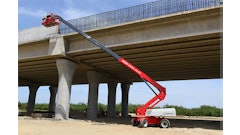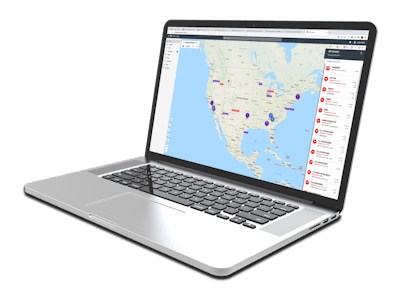
In an increasingly technological world, a term like telematics may be written off as white noise. However, that shouldn’t be the case.
“When you use telematics to increase your fleet utilization, decrease your downtime, improve compliance and avoid costly accidents, you boost your bottom line,” says Willy Schlacks, president and co-founder of EquipmentShare. “Plus, when you can track your people, assets and materials with precision, you gain a better understanding of your overhead and can generate more competitive bids—which means more money in your pocket."
Telematics experts from Tenna, Geotab, GPS Fleet Consulting, EquipmentShare and DPL Telematics share why rental company owners should consider adding this technology to their companies—and what to look out for when they do.
Why the uptick?
The original equipment manufacturer (OEM) telematics category is growing at a rate of 15.6 percent annually, as companies seek more insight into their fleet's productivity, safety, cost efficiency and compliance, according to Steven Berube, senior business development manager at Geotab.
“This shift can be attributed to the growth of the rental industry,” Berube says. “As more construction companies look toward the benefits of renting construction vehicles, as opposed to buying, these companies require a connectivity solution to gain complete visibility into their fleet. By integrating a telematics platform, rental companies can gain access to real-time data insights to help optimize fleet operations, enhance reporting capabilities, reduce fuel and maintenance costs and more.”
Additionally, the capabilities of telematics have increased while the size and cost of telematics units have decreased, according to Tony Nicoletti, director of sales and business development at DPL Telematics.
“Twenty-one years ago, when we first started as a telematics provider, the on-board hardware was the size of bread boxes with large, overt antennae, costing over $1,000 each and a monthly subscription fee north of $30 for location and daily runtime reports,” Nicoletti says. “The technology has evolved so much we even see customers track rental deep fryers and stump grinders. There is no longer a limit to what assets equipment owners can monitor and track.”
The benefits
Maintenance intervals
Using telematics data, rental company owners and end users can keep track of maintenance intervals.
“With telematics, rental companies can implement a comprehensive and preventive maintenance schedule to help identify vehicle issues before they occur, thus improving the safety and efficiency of their assets while reducing vehicle downtime,” Berube says.
The data is so precise that rental rental companies can see fault codes, fuel consumption and other diagnostic data, empowering them to take proactive steps before a machine goes to failure, Nicoletti says.
In the long run, keeping track of maintenance schedules can save thousands of dollars, according to Russ Young, chief business development officer at Tenna.
“Construction companies are famous for missing preventive maintenance windows,” Young says. “Instead of doing the oil change for 30 bucks, they end up having to replace the engine for $30,000. Prior to telematics data, the equipment operator would write down equipment hours at the end of every week on a piece of paper, and then the superintendent would drive it into the office and then some accountant person would type in those equipment hours. It’s not shocking that there were errors.”
However, with telematics data, that information is autonomously flowing into their system, and users can even create automatic work orders.
“Preventive maintenance is way less expensive than the maintenance because if something goes down on your jobsite, now you have to wait for it to either be fixed or have a new one delivered,” Young says. “Those equipment outages aren't just the cost of the new engine; it's also the cost of the data and your workers waiting to use that machine that’s down.”
Finally, maintenance diagnostics can help rental company owners make purchasing decisions in the future.
“Knowing which makes/models or even categories of assets have the most service problems helps companies make strategic decisions when sourcing their fleet,” Schlacks says.
Safety
Choosing a rental software that can be used across multiple pieces and brands of equipment not only prevents frustration from the end user, but it can also save the lives of crew members.
“Telematics is key if you look at daily vehicle inspections and how much time the user has operated a piece of equipment, but some manufacturers have created a telematics system where you can only use it on their equipment, and that creates problems where the different systems don’t talk to each other, and it actually leads to people dying. Some rental companies have these different systems, but then people don't use them because they are irritating.”
Telematics can also help protect against rental abuse and safety hazards on the jobsite.
“We have introduced tip and rollover detection in our devices, which allows rental companies to know if their renters are operating the assets in an unsafe manner or potentially rolling them over,” Nicoletti says.
Billing accurately
Scheduling engine maintenance isn’t the only reason why tracking engine hour use proves useful, according to Berube and Corey Fongemie, president of GPS Fleet Consulting. It’s also useful for billing purposes.
For example, rental companies are not always able to pick up their equipment on the day the rental period ends, and without telematics, these companies cannot track if the renter is using the equipment beyond the paid rental period.
“Lots of companies will charge their customers by the hour, and if there is no telematics system in the piece of equipment, it's all based on honesty,” Fongemie says. “So, proving that a piece of equipment was running certain hours a day and on certain days, rental company owners can then be able to bill based on that usage because the telematics system is tracking every single time that goes on or off.”
Berube adds that the increased visibility can also help with customer relations.
“This improved visibility enables the company to produce accurate billing, which can result in enhanced customer retention and return on investment (ROI) on their assets,” Berube says.
Additionally, some telematics companies offer starter disable capabilities that allow rental customers to remotely lock out a machine from starting in the case of nonpayment or theft; similar to utilities, if the customer doesn't pay, then it gets turned off, Nicoletti says.
Location tracking
Location tracking also helps solve several issues rental companies and end users may encounter.
“Theft is a huge problem in the industry, and recovery of assets, even if they’re covered by insurance, is so important especially with the growing supply chain issues,” Schlacks says. “Replacing stolen assets isn’t always immediately possible, and that cuts into revenue—telematics can both help reduce the likelihood of theft and help with recovery if it does happen.”
Additionally, telematics can up the efficiency of workers on the jobsite because they won’t have to waste time tracking down a given piece of equipment.
“There is a huge amount of inefficiency, for example, with someone renting a piece of equipment even though there was an identical piece of equipment on the other end of the jobsite not being used,” Young says. “Now you can look on your phone to see if there’s the equipment you need on the jobsite that’s not being used somewhere.”
Going hand in hand with finding an asset quickly, delivery and pickup of equipment can be streamlined using telematics.
“Locating an asset for pickup on a jobsite can be time consuming, so having telematics locations can take out the guesswork and save the driver time,” Schlacks says.
The challenges
When the data becomes too much.
One of the biggest challenges with telematics data is processing the large amount of data users can access at their fingertips.
“It is tempting to think, ‘I want as much data as I can get; a deluge of data can be incredibly valuable;’ however, the reality is that many equipment owners are not yet capable of properly digesting available data and often become overwhelmed by it, essentially creating more work than benefit,” Nicoletti says. “If your goal is to improve billing and service scheduling, then you may only need location and usage monitoring, which is available in many telematics products. If you are concerned about theft or suspicious customers, you probably do not need a data-intensive hardwired product, but rather something you can 'slap and track' to make sure your rental asset is returned.”
Marrying different systems.
Rental companies should keep in mind that OEM manufacturers log telematics data differently, and if they are using multiple telematics providers, it is crucial to understand how OEMs, which commonly use a diverse piece of hardware set, normalize their data compared to a third-party telematics provider that uses a single piece of hardware.
“A telematics software solution that only lets rental companies manage vehicle data from one manufacturer will not provide the flexibility and capability needed to efficiently manage an entire fleet,” Berube says.
A solution, Young says, is to seek out a telematics system that has the ability to communicate with other telematics systems.
“Having telematics, instead of a paper driven process, is definitely a step forward,” Young says. "The next big move in telematics is having everything on one simple app, regardless of where you rent it, whether you rent it or own and whether it’s a piece of equipment or a truck moving down the road.”
Security
It’s also important to choose a secure telematics provider.
“(Recently), a telematics provider was hacked because every single device they built had a hard coded password of 123456,” Schlacks says. “Thousands of customers now have all their asset information displayed in real time and historically to anyone on the internet.”
How to choose
When deciding on a telematics system, rental company owners should consider their regional market.
“Depending on the market, you're going to want a piece of equipment that can endure the elements,” Fongemie says. “If you're in the South, get something that can withstand the heat, but if you're in the North, get something that can tolerate the cold.”
Rental companies should select a provider is best suited to meet their fleet management needs and goals and one that can communicate with other providers when needed.
“While OEMs provide a telematics solution that is preinstalled with costs already baked into the cost of the machine, the OEM telematics platform needs to integrate data from multiple pieces of telematics hardware that need to be manually maintained or updated,” Berube says. “With this in mind, many rental companies prefer to go with a third-party telematics provider, which may be considered an easier option when it comes to integrating data from a variety of OEMs into a single platform.”
In addition, Berube adds that rental companies should consider the size and diversity of their fleet to determine the actual benefits of implementing a telematics platform.
“For example, the diversity of equipment forces the rental customer into a less machine-specific maintenance schedule. Also, if the rental company is managing thousands of equipment, it would be too difficult to understand the maintenance schedule of each piece of equipment,” Berube says. “Therefore, rental companies with a small fleet of equipment are less likely to need telematics compared to a larger rental company that will benefit from insights collected from hundreds or thousands of their fleet.”
Rental company owners should also confirm that a provider can cover and grow with their fleet and that company staff has the capability to use the software properly.
“Like most technology deployments, it makes sense to pilot the selected solutions for a period of time to allow your team members to familiarize themselves with it and then gather their feedback,” Nicoletti says. “This is a critical stage, as many questions or concerns that were never considered come to light and must be addressed prior to full-scale deployment. If the required team members cannot or will not use the technology, then it has no benefit to the operation. Once everyone is on board and the road map is clear, it is safe to execute the larger deployment.”



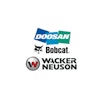

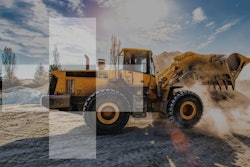
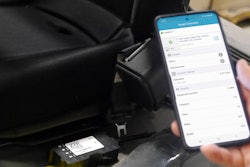







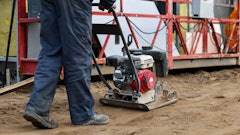
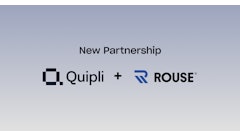



![Building Angled Sm Edit 6050b8d213f1b[1]](https://img.forconstructionpros.com/mindful/acbm/workspaces/default/uploads/2025/09/building-angled-sm-edit6050b8d213f1b1.Ygq5aAos3b.png?ar=16%3A9&auto=format%2Ccompress&crop=focalpoint&fit=crop&fp-x=0.53&fp-y=0.23&fp-z=2&h=135&q=70&w=240)
